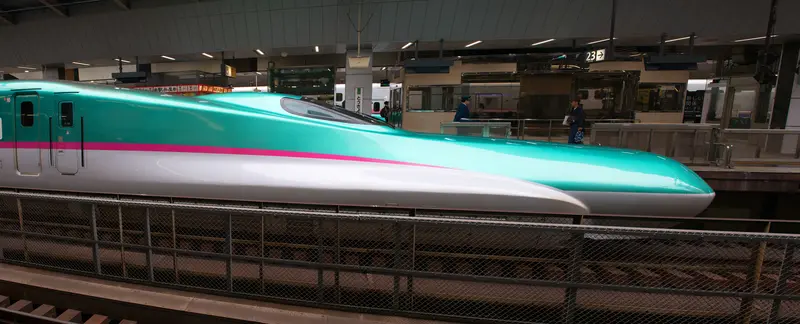[Originally published in 2014 as How Do You Design the Best Train? Copy the Designs of the Ultimate Engineer]
I ran across a story on biomimicry a few days ago. Although it discusses things that happened a while ago, I thought it was a great example of how copying designs found in nature can improve the designs produced by modern science and technology. The story involves Eiji Nakatsu, a Japanese engineer who worked on the high-speed “bullet” trains in Japan. These trains travel at speeds approaching 200 miles per hour, and not surprisingly, there are a lot of design challenges involved in such systems.
In particular, three design issues plagued the trains. First, the train would produce a very loud noise when entering a tunnel, because it would be “smashing” into a column of confined air. While this slowed down the train a bit, the big problem was the noise that it produced. The loud bang would disturb not only wildlife but also nearby residents. To comply with Japanese noise pollution regulations, something needed to be done.
According to the article, Nakatsu met this challenge by redesigning the front of the train. As a bird-watcher, he had observed Kingfisher birds diving into water without producing much of a splash. He realized that this was similar to what the trains had to do when entering a tunnel, so he designed the front of the train to be more like the head and beak of a kingfisher. It worked. The train could enter tunnels at full speed without producing a loud noise.

There were also two problems related to the pantograph, which sticks out above the train and connects it to the power lines. First, the pantograph vibrated at high speeds, and that produced a lot of noise as well. Engineers also fixed this by copying a design from nature. They redesigned the pantograph after an owl’s wing, which has tiny serrations in its feathers. Those serrations cause the air rushing over the wings to form small vortices, reducing turbulence. The result is near-silent flight. Not surprisingly, the newly designed pantograph did not have the vibration problems of the previous version, and as a result, it made little noise, even at full speed.
In addition to the vibrations, the pantograph also experienced a lot of wind resistance, which added to the noise issues and reduced the train’s efficiency. To fix that, the body of the pantograph was redesigned based on the shape of a penguin. Since penguins are shaped so that they experience a low level of drag in the water, the engineers assumed that a penguin-shaped pantograph would experience a lot less wind resistance. They were right.
The article I linked at the beginning of this piece has some nice “before and after” illustrations to show you how these parts of the train were redesigned based on what is seen in nature. This process is called biomimicry (mimicking the designs we find in nature in our own designs), but it is really just an example of engineers copying the designs that were produced by a much more talented Engineer.





